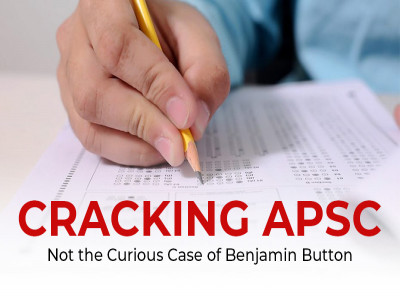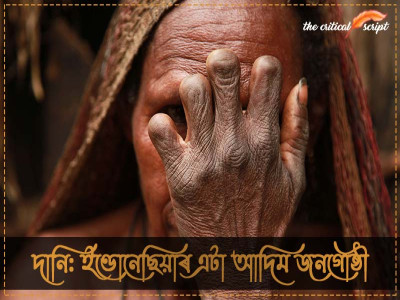
Sidhu Moose wala: Death of a rebellious truth-teller and a “new-age influencer”
The allure
of Moose wala was somewhere between that of a popstar and a folk figure, a
rebellious truth-teller and a new-age influencer. Moose wala’s lyrics gave a
platform to the aspirations and plight of young people living in the midst of
agricultural and social upheaval.
In a career
spanning over roughly five years, Sidhu Moose wala, a 27-year-old Punjabi
singer, has released over 60 singles, three albums, and collaborated with
artists such as Raja Kumari and rapper Bohemia.
Understanding Moose wala
Subhdeep
Singh Sidhu aka Sidhu Moose wala was born in Moosa village in Mansa district,
Punjab, where he pursued his engineering before moving to Canada in 2016. Under
the pseudonym Moose Wala, he released his debut single "So High" the
following year. Since then, the singer has become a household name in Punjab,
as well as among Sikhs in Canada and the United Kingdom.
Moose wala represented Punjab's
rurality and agrarian ethic through his songs and delivery, which combined the
techniques of the region's folk singers. His songs inspired listeners to
embrace agriculture as a career and the community as their home.
However, Sidhu's
image and imagination appeared to be at odds with each other – On one hand, he was
a privileged Jatt guy from Punjab who travelled to Canada after his engineering;
on the other hand, he sung of caste as a source of pride, of his pistol as his
cherished, and of having innumerable enemies.
Although a
modern-day online celebrity, he frequently referred to a past era to make his point.
In his artwork, he included Robin Hood-esque folk heroes like Jeona Morh and
Sikh warriors like Mai Bhago.
His career
was a success story of increasing online material consumption, which continued
and even blossomed during the pandemic lockdowns
Many a
times, his content and approach sparked debate, which became a part of his
legacy. His songs featured a lot of guns and bloodshed, and for which he was often
chastised. His lyrics highlighted his dominance over women based on his
material things, such as guns, vehicles, and the ability to unleash
unimaginable violence.
Sidhu's
songs expressed the plight and hopes while also providing a heightened glimpse
of the Jatt worldview, which is ingrained in rural social mores, a gun culture,
and the power of wealth over life. He compared the pind, or village, to the
"hood," as it is known among rappers in the West.
In his music videos, he challenged fictional foes, and
in real life, he challenged his contemporaries to duels. High-end SUVs and a
variety of sophisticated weapons were essential properties in the mise-en-scene
representing global culture in his Punjabi context, though replete with
familiar English words. Thigh-thumping ('Thigh Five' in new-media parlance) was
his standard performative device to attract huge cheers from impressionable
audiences.
The Assassination of Moose wala
Sidhu Moose
Wala was murdered and killed on May 29, only days after his song The Last Ride,
which turned Indian rap into a rural affair. While he was chastised for
promoting macho and gun culture, the Punjabi rapper struck a chord in his
native state – and with Punjabis all over the world – by focusing attention on
the pressing challenges of an agricultural society in transition.
Sidhu Moose
Wala's meteoric ascent to prominence rocked Punjab's cultural landscape and its
people, then expanded even further and beyond. His cold-blooded assassination
in broad daylight did send shockwaves even deeper.
Some have
linked Sidhu's assassination to a gang conflict and the Punjab's gun culture,
of which Moose Wala was not only supporting, but also drawing attention to. The
use of newspaper headlines in the opening or finishing of his songs
demonstrates this, implying that he was adding depth to one-dimensional news
footage about violence.
The assassination has sparked a political uproar in the state, with politicians from the opposition criticising the authorities. According to state police, a mobster from Canada claimed responsibility for the attack. Moose Wala's family has rejected this, accusing the police of failing to execute their job correctly. In the midst of it all, protests broke out in several areas of the state as fans and followers of the musician took to the streets, causing the authorities to issue a call for calm. The issue has now been sent to a high court for inquiry by the state's chief minister.
Final Thoughts
While
Sidhu's song undoubtedly celebrated weaponry, it is equally true that he never
advocated for the unjust use of guns. Sidhu's allusions to firearms harken back
to the debates that surrounded Punjab's militancy in the 1980s.
Sidhu, like
Malcolm X in the United States, advocated for the use of guns solely in
self-defence. His songs' independence inspired young people to fight whatever
injustice they were confronted with.
It is vital
to note that his aestheticization of violence is rooted in the global cultural
industry's hyper-masculine environment. Rap music, in particular, depicts this
via urban social minorities' masculine violence and the belief that social
unity through kinfolk in gangs necessitates a competitive culture of respect.
It is also
critical to recognise that Sidhu's references to firearms cannot be used
to absolve the state government of responsibility for the state's gun culture.
After all, for decades, this culture has been carefully fostered under
government patronage.
When
examining Sidhu's lyrics over the course of his brief career, a movement away
from early songs about Jatt dominance, hyper-masculinity, and gun culture can
be seen. Over time, he began to sing about socio-political concerns in Punjab,
such as political prisoners.
Sidhu made
a huge contribution towards expanding the soundscape for the Punjabi language
and Punjabiyat in a culture always trying to restore its hond (presence). This
was mirrored at his cremation, as individuals from all castes, classes,
genders, professions, religions, and regions gathered to pay their respects to
his family.
Disclaimer: The opinions expressed in this article are those of the author's. They do not purport to reflect the opinions or views of The Critical Script or its editor.

Newsletter!!!
Subscribe to our weekly Newsletter and stay tuned.

















Related Comments